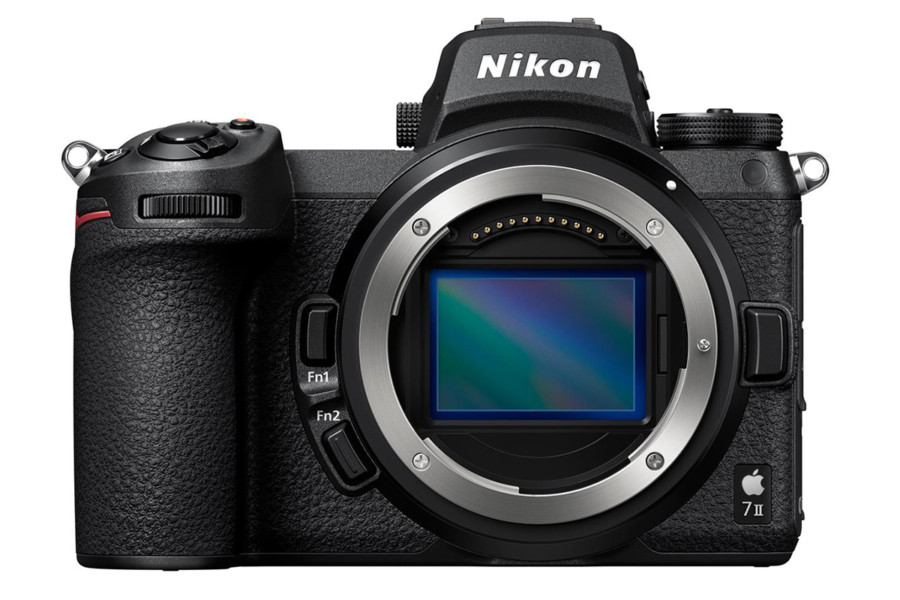Imagine Apple Acquiring Nikon: A Hypothetical Scenario
Apple would likely lose money from such an experiment, yet its benefits are immeasurable.
Nikon has suffered years of revenue decline and stock price drop as a result of COVID-19’s detrimental effect on camera sales, impacting all industries across the board. Much has been written about their ILP-based Z system rollout; strange product releases like Df camera; as well as their complete failure of their DL compact series; however all those factors pale when put against smartphone proliferation.
Even as consumer spending on digital still cameras with interchangeable lenses has steadily decreased since 2013, consumers still bought about 8 million digital still cameras with interchangeable lenses in 2019 (compared with Apple’s sales of approximately 185 million iPhones during this time). I remain hopeful that post-COVID consumer travel and spending trends will spark an upsurge that boosts camera sales; the vast majority of smartphone users may never buy dedicated cameras, yet their phones still serve as gateways to purchase for many people.
Since 2003, Sony, Canon and Nikon have all made innovations to mirrorless technology, autofocus tracking and sensor resolution, but have mostly ignored the computational/programmable approach taken by smartphone makers like Apple. One notable exception is Zeiss ZX1, which uses modified Android operating system but is equipped with Adobe Lightroom as its secret weapon – making an otherwise expensive fixed lens paperweight of a camera that still takes great photos!
Smartphone manufacturers continue to push the limits of technology with folded lens optics attached to tiny sensors – using software to stack better image quality. Consumer demand for different focal lengths or creative choices has led to the development of third party clip on lenses; but dedicated optics coupled with larger sensors housed within ergonomic packages remain superior solutions.
Which brings us back to Nikon. Although relatively smaller than Sony and Canon, its market share has fallen into the teens (Canon currently holds 48%). As with any technology company struggling to survive, new features ranging from 8K video streaming and increased megapixel counts may not drastically alter their tenuous position; therefore, any necessary pivoting must occur or face certain doom.
Simultaneously, Apple released their much anticipated M1 chip – an ARM-based system-on-chip (SoC) which analysts estimate can be produced at one-fifth the cost of Intel chips used in earlier Mac generations. Photo industry SoC’s like Expeed and Bionz simply can’t compete with Apple’s engineering resources, supply chain expertise and unit cost advantage.
Imagine a Nikon camera built on iOS with Apple Silicon powering it, featuring LiDAR sensor technology and featuring autofocus algorithms like face tracking that could easily be replaced with third-party alternatives. Nikon/Apple cameras could set themselves apart in the photo ecosystem with computational features like HDR, noise reduction and image stabilization that make their images truly standout. Airdrop could offer near-immediate backup of images. An iPhone could serve as an easily accessible hotspot to avoid the need for camera users to double as phone users, with apps providing functionality like intervalometers, astrophotography guides and remote photography features that could quickly expand upon this concept. UI would adhere to iOS or MacOS design languages – eliminating an archaic 20-year menu system. With USB-C port connectivity and software programmability capabilities, this camera could potentially open up an ecosystem of interesting add-ons – something many would be excited to experience.
Apple has maintained an advantageous market position by creating its closed ecosystem, protecting itself from Android’s pains. Sony and Canon would likely find it more challenging to follow Apple in such an aggressive fashion; Canon recently filed a patent application for an Osmo-style gimbal with interchangeable lenses similar to what Sony’s QX-100 provides; Canon and Sony should both continue innovating their respective sectors.
Apple holds nearly $200 billion in cash. Nikon is worth approximately $2.25 billion, so any acquisition would represent only a drop in the bucket for Apple – though this deal makes no sense considering their focus on emerging technologies like AI or features with broad consumer appeal like DarkSky. Apple would gain nothing by an acquisition; but through partnerships or joint ventures they might test third party markets for Apple Silicon. Imagine Amazon EC2 clusters filled with their chips; that could provide massive revenue opportunities.
2021 is poised to be an exciting year of economic renewal and renewed human spirit, so let’s dream big! As an avid photography lover and longtime Nikon user, I find this year to be particularly intriguing for Nikon – an acquisition would certainly make more sense than it ever could.
